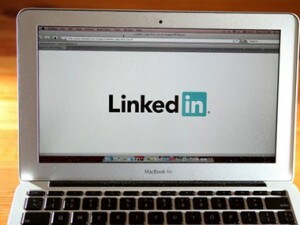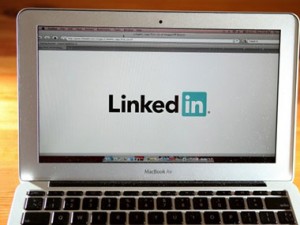[caption id=“attachment_11664” align=“alignright” width=“300” caption=“AFP Photo”]
 [/caption]
[/caption]
As one of the first major internet companies to go public since Google, LinkedIn’s IPO has had investors and analysts breathless with anticipation. And what happened on Thursday, LinkedIn’s market debut, didn’t disappoint.
The professional social networking site, which has 9 million users in India, shocked investors and analysts when shares sold at between $80 and $120 per share-sometimes double the initial price of $45. With the surge in share price,the company’s current valuation is upwards of $8 billion, putting it in the same league as business stalwarts like Hyatt Hotels and Macy’s.
These developments, in turn, have enraged some industry observers. Financial commentator and TV personality Jim Cramer called the pricing “outrageously overvalued and preposterous.”
And David Menlow, analyst at IPO Financial, told The Daily Beast that people are paying too much for LinkedIn stock because of the hype around social media: “The mentality that’s out there is, ‘We can’t get into Facebook, we can’t get into Twitter or Groupon or whatever, so we’ll pay whatever it takes to get into this uncorrelated proxy for those offerings.”
The huge jump in share price has some crying foul that LinkedIn’s underwriters had “ wildly ” underpriced the deal so that they could cash in for their institutional clients, who got first dibs on buying into the company before its first day of public trading.
“By underpricing the stock, Morgan [Stanley] and [Bank of America] gave their best institutional clients a gift of at least $175 million this morning. And that money came right out of LinkedIn’s pockets and the pockets of the LinkedIn shareholders who sold on the deal,” wrote Business Insider’s Henry Blodget.
And there’s speculation and worry that LinkedIn’s debut results will create “ market insanity ” when it comes to the much-anticipated IPOs of brands like Facebook, Zynga, and Twitter.
Impact Shorts
More Shorts“This is a barometer IPO,” Scott Sweet, a managing director at IPO Boutique, an IPO rating service, told The Daily Beast. “LinkedIn will serve as a key price point if and when Twitter, Zynga, Facebook, and GroupOn decide to file.”
A bursting bubble?
But the big question on everyone’s mind, of course, is whether LinkedIn’s surprising and frenetic first-day stock issuance is evidence of another Silicon Valley bubble.
Some argue that unlike the last bubble, companies like LinkedIn, which had revenue of about $200 million in 2010, aren’t just paper tigers . And as Business Insider’s Blodget put it, “screaming ‘bubble!’ just because the Internet boom has produced another company that is worth a lot is ludicrous. It will be a ‘bubble’ again when dozens of crappy companies with no businesses are going public at monstrous valuations –the way they did back at the end of the 1990s.”
But Fox News and the Wall Street Journal think that the bubble is upon us, given that LinkedIn only had earnings of $15 million in 2010, and given the difference between LinkedIn’s valuation on the private secondary markets ($2.5 billion) and the trading floor ($8 billion).
If this is a bubble-and we’ll surely find out soon enough if it is-it’s still one that looks and feels different from what we saw a decade ago. Still, a little excitement around events like the LinkedIn IPO might just be the jolt that Silicon Valley and the U.S. economy needs. As another Wall Street Journal commentator put it:
Successful IPOs like LinkedIn’s get more people interested in investing in start-ups, boosting angel and venture-capital coffers. … The whole process got out of hand in the late 1990s, of course, but a little touch of the old dot-com fever might not be such a bad thing for the economy right now.
)